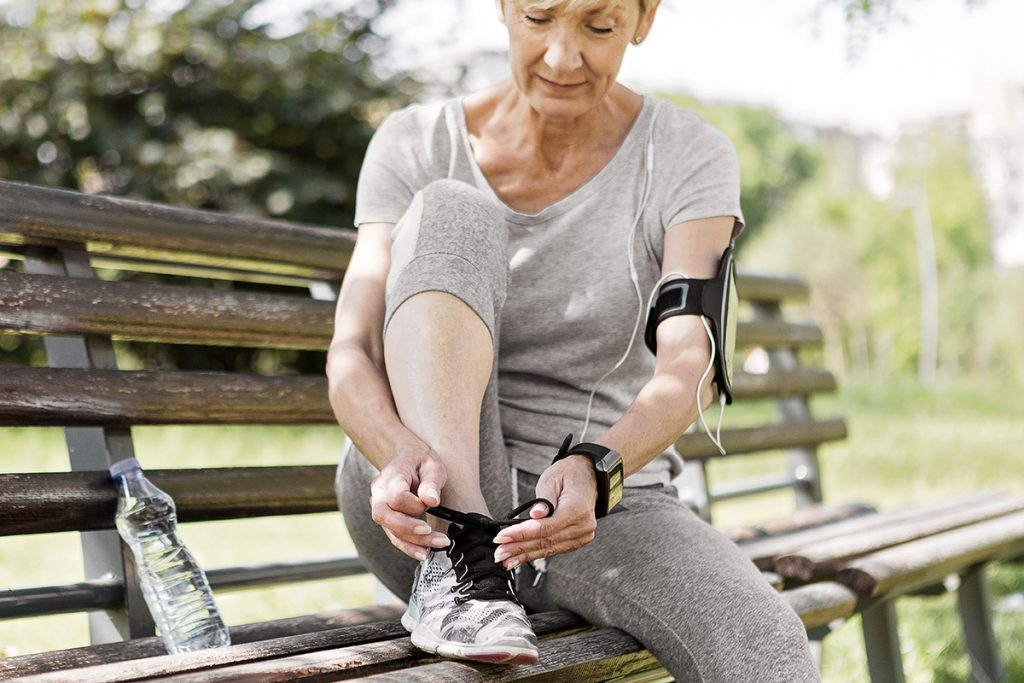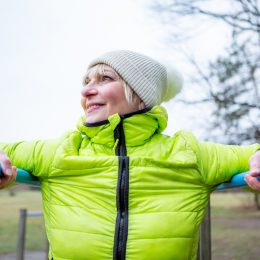4 Common Causes of Foot Pain for Seniors (and How to Avoid Them)
Foot pain can get in the way of living your best life. Here’s why you might be having issues, plus tips to alleviate the ouch.

You’re going about your day fine and then — ouch! You experience a throbbing, dull ache underneath your big toe or a sharp pain in your arch that just keeps getting worse.
What’s going on?
“As you get older, you may tend to notice more issues with your feet in the form of pain, discomfort or aches that come and go,” says Sidney Weiser, D.P.M., a podiatrist at Quality Podiatry Group in Florida. “Sometimes this can be a symptom of a bigger problem, but in many cases, it’s related to use of those joints and tendons over many years.”
There are also some age-related conditions that increase the risk of developing foot pain.
With the help of foot specialists, we’re taking a closer look at four of the most common foot problems seniors face, along with the best ways to find relief — or sidestep them altogether.
Add SilverSneakers to your wellness routine! Classes and events are happening daily at participating gyms, online through SilverSneakers LIVE, and at community centers near you. Activate your free online account to get started.
1. Bunions
There’s a common misperception that bunions — bony bumps that develop on the inside of the foot at the big toe joint—are related to footwear, especially high heels. But that’s not the case, says Cameron Phipps, D.P.M., a foot and ankle surgeon at Catoctin Foot and Ankle Center in Virginia.
“It’s a genetic condition, but many people often don’t notice it until after age 40, so they think footwear is the culprit,” he says.
Your shoe choices over the years aren’t totally off the hook, however. Dr. Phipps points out that frequently wearing “cramped shoes” (high heels and tight Oxfords, we’re looking at you!) can make them progress faster.
2. Plantar Fasciitis
If you’re experiencing pain on the bottom of your foot, particularly by the heel, you may be dealing with plantar fasciitis. It’s a condition marked by inflammation of the tissue there.
According to one estimate, nearly 10% of older adults experience this problem, and many of them have limited mobility as a result. This can come from degeneration of the fat pad in the heel, overuse or inflammation, all of which are more common in older adults.
3. Osteoarthritis
This type of arthritis can occur throughout the body, including the feet and ankles. It’s caused by years of wear and tear on the joints. It may develop into bone spurs at the base of one or both big toes.
4. Bursitis
Bones, tendons and muscles are cushioned by fluid-filled sacs called bursae. When these sacs become inflamed, you’re dealing with bursitis. While the condition can happen at any age, older adults are more prone to bursitis due to using the joints so much over decades.
The Path to Foot Pain Relief
Foot problems are not inevitable, says Dr. Weiser. However, since they do happen with more frequency as you get older, it can be helpful to keep some pain relief strategies in your arsenal.
The best way to alleviate foot pain and discomfort often depends on the severity of your condition, as well as why it’s occurring in the first place. Before you try any at-home remedies, it’s important to see your doctor for a proper diagnosis and treatment plan.
For example, gout, which is a form of arthritis, is often mistaken for a bunion because it commonly affects the big toe. Or you could have a bunion, but it’s related to an undiagnosed condition like rheumatoid arthritis.
After checking with your doctor and making sure the issue can be alleviated with lifestyle modifications, consider these relief strategies:
Change your shoes. Maybe you’ve been wearing the same few favorite pairs of shoes for years. The problem is that like anything, shoes break down over time and end up offering less support. The change may be so gradual that you don’t notice it, until your feet start hurting.
In addition to loss of support, older shoes may create more friction against the skin, which can contribute to corns and calluses.
Subscribe to our newsletter
It's quick and easy. You could be one of the 13 million people who are eligible.
Already a member? Click to discover our 15,000+ participating locations.
Follow Us
Loosen your laces and socks. Could the answer to your foot pain be as simple as avoiding tight laces and socks? That can sometimes be the case, especially when you exercise, according to Dr. Weiser.
“Feet naturally swell as you exercise, so you need to accommodate that,” he says. “Laces or socks that are too tight create compression, and that might lead to pain and numbness.”
Stay hydrated. Another tip that might sound unrelated to foot health is to drink more water, says Dr. Weiser. But it’s not counterintuitive, because dehydration can affect all of your joints and tendons, including those in your feet, he adds.
Give your feet a workout. The muscles in your feet may not be as large as your glutes or your core, but they’re every bit as important. That’s why it’s important to put them through their paces. Doing a few simple pain-relieving foot exercises every day can help them stay strong, flexible and pain-free. Try these 4 Foot Exercises for Older Adults.
If foot pain is interfering with your quality of life, talk to your doctor about other options like steroid injections that can reduce inflammation or prescription orthotics that go inside your shoes to offer customized support.
See our sources:
Plantar fasciitis overview: Johns Hopkins Medicine
Foot pain prevalence in older adults: BMC Musculoskeletal Disorders
Foot and ankle arthritis: American Academy of Orthopaedic Surgeons
Bursitis overview: StatPearl
Health problems often mistaken for bunions: CreakyJoints
Corns and calluses overview: Mayo Clinic
Check Your SilverSneakers Eligibility Instantly
SilverSneakers members can go to thousands of nationwide gyms and fitness locations, plus take SilverSneakers LIVE online classes that are designed for all fitness levels and abilities. If you have a Medicare Advantage plan, it may include SilverSneakers — at no additional cost. Check your eligibility instantly here.
Already a member? Get your SilverSneakers member ID and exclusive fitness and wellness content by activating your online account here.
Not eligible for SilverSneakers? You can still get 200+ free SilverSneakers On-Demand videos and stay in touch with us by creating your online account.





